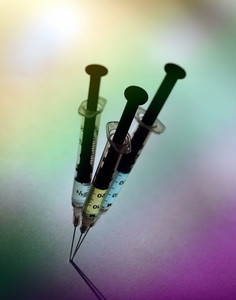In an article by Dr Claire Morgan and Dr Daryl Fernandes of Ludger, published in IPI of Autumn 2009, it is shown how both the original drug manufacturers and the designers of follow-on biologics could produce biobetter monoclonal antibodies (MAbs) through glycoengineering. (see also Ludger’s GTO-QbD: Defining glycovariant biobetter MAbs, When is a glycoengineered biobetter commercially better than a biosimilar? and Strategy and tools for building glycoengineered biobetter MAbs)
Design out NeuGc, Fab glycosylation for biobetter MAbs
Biosimilars/Research
|
Posted 28/01/2010
 0
Post your comment
0
Post your comment

Dr Morgan and Dr Fernandes suggest several first glycosylation features to consider modifying when designing biobetter MAbs. These include changes to the N-glycans in the Cg2 domain of the fragment crystallisable (Fc) region, as well as modifications to fragment antigen-binding (Fab) glycans if they exist in the therapeutic. In general, major changes can be achieved by switching cell lines, and smaller changes by modifying cell culture conditions. They note that the modification of one glycosylation feature will generally affect others, so when glycoengineering the glycosylation should be viewed as a whole, rather than the sum of independent components. (see also Design out Gal-α(1,3)-Gal for biobetter MAbs and Modify Fc fucosylation and β-galactosylation for biobetter MAbs)
Design out NeuGc
The two main types of sialic acid residues found in MAbs produced in mammalian expression systems are N-acetyl-neuraminic acid (NeuAc) and N-glycolylneuraminic acid (NeuGc). NeuAc is the desired, normal human-type sialylation, while NeuGc is found in non-human glycoproteins and is considered an undesired, aberrant form of sialylation for therapeutic glycoproteins. Human cells are known to lack the enzyme cytidine monophosphate (CMP)-NeuAc hydroxylase required for the synthesis of NeuGc, so any present will have become incorporated into a therapeutic via cell culture medium or from non-human cell lines producing the MAbs. This can result in neutralisation by anti-NeuGC antibodies. Controlling the ratio of NeuAc to NeuGc is important for biomanufacturers, as: (a) NeuGc may reduce drug efficacy through neutralisation by anti-NeuGc antibodies found in the serum of some patients, and: (b) NeuGc is thought to be linked to chronic inflammation in some individuals. The authors write NeuGc can be designed out by switching to cell lines that produce just NeuAc and eliminating animal serum from cell culture medium. If sialylation is not important for your MAb, they advise to consider using an expression system that lacks sialyltransferases (e.g. plant or yeast). Elimination or reduction of NeuGc should move your drug towards a biobetter with a better safety and/or efficacy profile.
Design out Fab glycosylation
Some MAbs have potential N-glycosylation sites in their Fab region, which may have full or partial glycan occupancy. These Fab glycans can reduce efficacy by interfering with antigen binding and increase product heterogeneity. In such cases, the authors write you should aim to reduce the Fab glycosylation via cell line switching. Note that for a biobetter with the same primary and secondary protein structure you cannot remove glycosylation sites by modifying the protein primary structure.
Reference:
Claire Morgan and Daryl Fernandes. Designing Biobetter Monoclonal Antibody Therapeutics By Glycoengineering. International Pharmaceutical Industry (IPI) p. 38-44. Autumn 2009.
Source: International Pharmaceutical Industry (IPI)
News
FDA approves six denosumab biosimilars
EMA recommends approval for four biosimilars targeting three therapies
General
Samsung Bioepis wins Pyzchiva case; Regeneron patent rulings threaten foreign biosimilars
Chinese biosimilars go global: growth, partnerships, and challenges
What is the future for the US biosimilar interchangeability designation

Biosimilars/Research Posted 05/06/2025
Biosimilar clinical efficacy studies: are they still necessary?

Biosimilars/Research Posted 27/05/2025
The best selling biotechnology drugs of 2008: the next biosimilars targets








Post your comment